AUGUST 16, 2024: Yesterday we did not have enough time to visit Girona, so we returned there today. We first visited Girona in 2007 and saw several of the Jewish heritage sites in the city then. Today we hope to verify that they are still there and add several new places to our list.
Before telling about our day in Girona, a bit of background. Spain today is divided into 17 autonomous communities or regions. Spain’s autonomous communities are similar to U.S. states in some ways, but with important differences. Like U.S. states, they have their own governments, parliaments, and varying degrees of legislative powers, such as education and health. However, Spain’s system is more decentralized, with certain regions (like Catalonia and the Basque Country) having more autonomy, especially in cultural matters. Spain’s Constitution allows for asymmetrical delegation of powers, meaning some regions have more control over certain areas than others, unlike the more uniform powers of U.S. states.
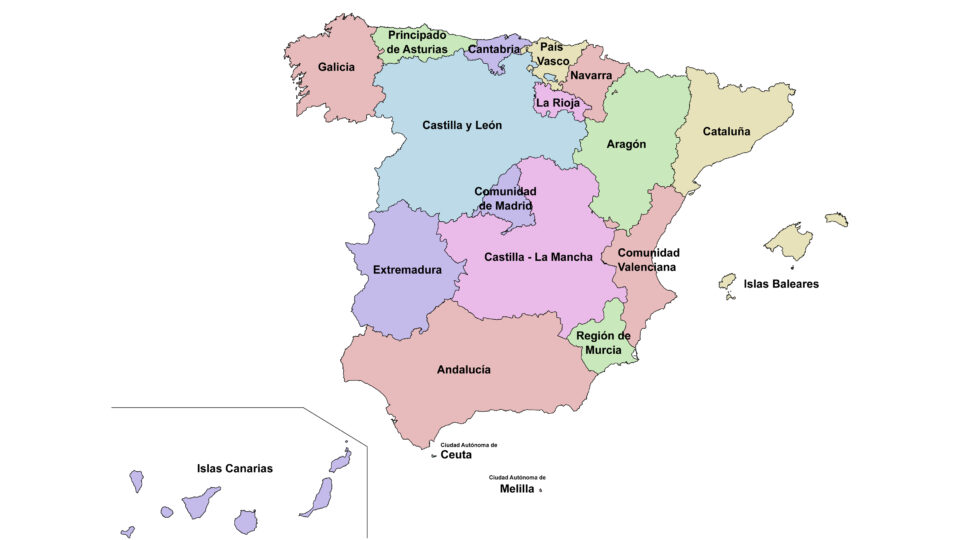
Girona, a city of over 100,000 people, lies about 88 km (55 miles) north of Barcelona. The autonomous community in this northeast corner of Spain is known as Catalonia. Catalonia includes both Barcelona and Girona. In Catalonia, the official language is Catalan, along with Spanish.
How does this relate to finding Jewish heritage sites in Girona? In Spanish, when looking for what once was the Jewish neighborhood, we look for the “Juderia”. However, in Girona, where they speak Catalan, the medieval Jewish quarter is called the “Call”. It is thought that the word Call comes from the Hebrew ¨Kahal¨ (קהל). The Call wasn’t a ghetto but rather a designated living area that allowed for Jewish community life under royal oversight. It was a matter of convenience for both parties, as the King could keep a watchful eye on “his” Jews, overseeing any laws that he may have implemented, but also giving protection and allowing Jews to live a Jewish life, according to Jewish law.
The Jewish history of Girona, dates back to 890 when Jewish families first settled near the Christian cathedral. The community thrived in the 13th century and was known for its Kabbalistic school and scholars like Nahmanides (the Ramban). However, growing persecution in the 14th century, which culminated in the 1492 expulsion of Jews from Spain, ended the Jewish presence in the city.
The Call was usually an area of narrow streets with homes, shops and workshops (like bakeries and slaughterhouses) and buildings for worship or rituals (synagogues and baths). The neighborhood would expand as the population grew and shrink when the population fell. Girona’s Call is considered well-preserved.

The Jewish population in Girona was large enough to be recognized as an Aljama. Aljama refers to an organized Jewish community with self-governance and institutions like synagogues, schools, butchers, ritual baths, legal bodies, etc. It was the administrative and legal structure of Jewish life in medieval Spain.
Call refers specifically to the physical Jewish quarter, the designated neighborhood where Jews lived. It was part of the Aljama, serving as the residential and communal space for the Jewish population.
In short, an Aljama governed the community, while the Call is where they lived.
In Catalonia, there were about 150 Jewish communities and about 30 official Aljamas. The smaller Jewish communities would rely on the services of the Aljamas. Girona was an important Aljama that provided Jewish services for a large rural area.
Having explained Call and Aljama, I can now talk about our day in Girona.
Before exploring the Jewish sites, we wanted to get Mark a local SIM card for his phone. This is what we usually do – I go with an Israeli phone plan and Mark gets a local SIM. After waiting a long time at the first store, the one young worker who spoke English told us that they do not sell pre-paid SIM cards. At the second store, where no-one spoke English and one of the other customers translated for us, they had SIM cards and monthly packages, but you needed to show your passport to get one. Our passports were in our apartment in Besalu. After wasting two frustrating hours on this, we gave up and decided that once back in Besalu, using the apartment WiFi, Mark would for the first time, purchase an eSIM. I am happy to report that using Airalo this was easy to do online, and we have been satisfied with the service.
The mobile stores were in the southern part of the old city and the Call was in the north. In between, was B-12, one of several vegan restaurants in the city. We decided to have lunch before continuing to the Call. We grabbed the last available table (surprisingly popular place) and enjoyed a 3-course vegan meal. It seems that in many restaurants here, you pay one price, and get an appetizer, a main dish, a dessert and a drink. For drinks, they had a choice of 80 different Catalan craft beers. Happily, one of the beers was non-alcoholic.
Once we were fed, we were ready to start exploring. We had a long list of different places that we wanted to check out – 15 potential Jewish sites along a route walking south to north in the Call. To reach the Call, we first needed to cross the Onyar river. Going over the bridge provided the classic view associated with Girona – multi-colored buildings along the water with the cathedral towering over all.
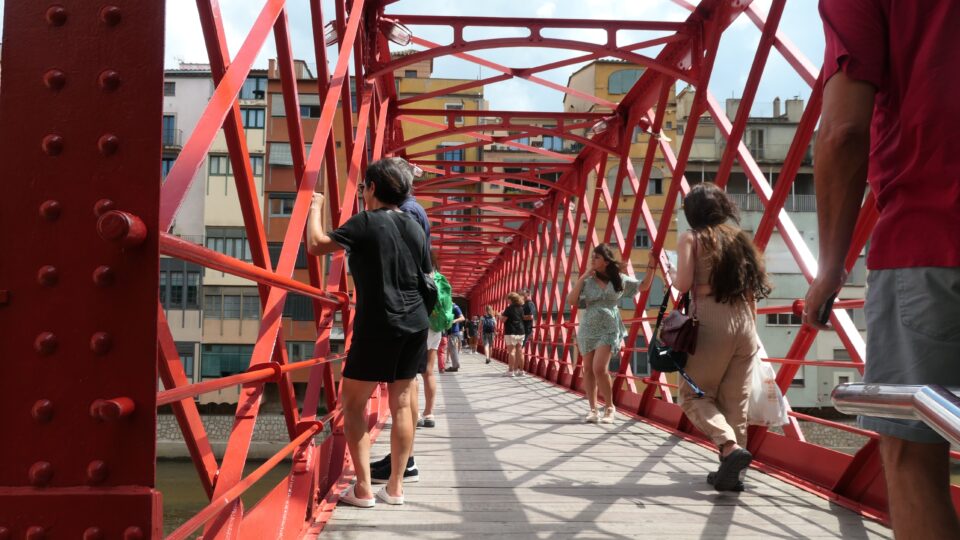
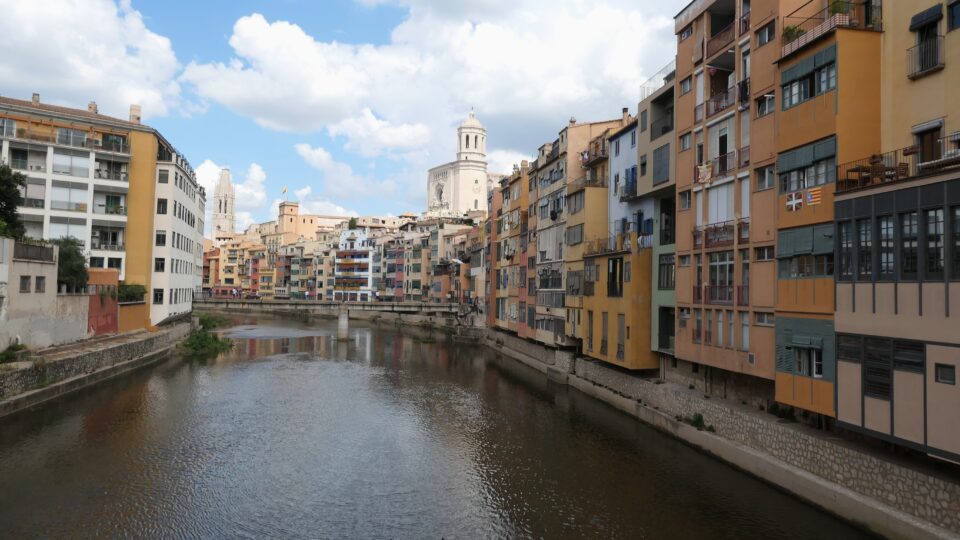
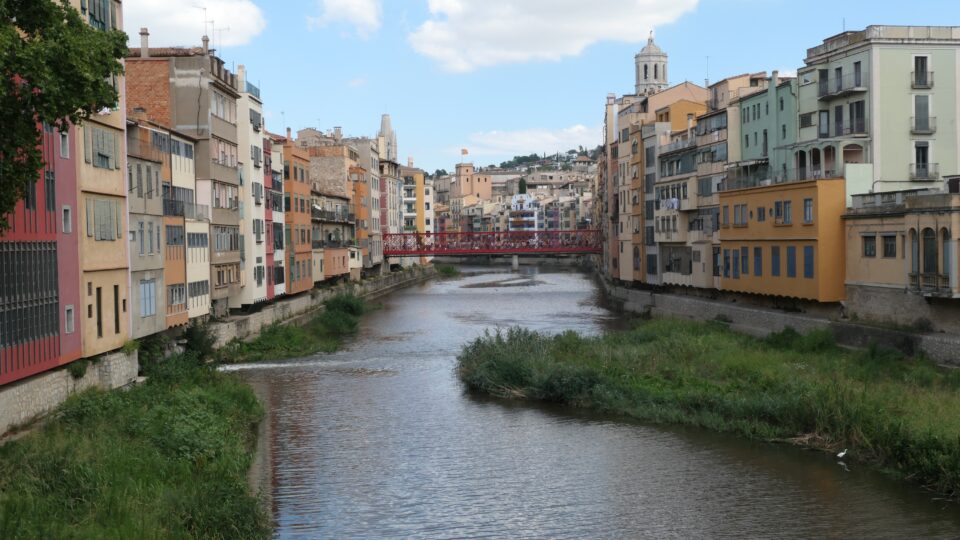
We did not get off to a good start. The first site on our list was a building where the remains of a mezuzah were supposed to still be visible. Upon reaching the address, no trace of this could be found. The place was now a restaurant, and probably upon renovation, this relic of Jewish history was destroyed.
We then proceeded up Força Street (Carrer de la Força), the main, narrow and steep cobblestone street that traverses the Call. It intersects with several small alleys and in the past, all these formed the basic nucleus of the Jewish quarter. The name Força Street is from the 17th century. In the Middle Ages, the street was known as Carrer del Call, the street of the Call.
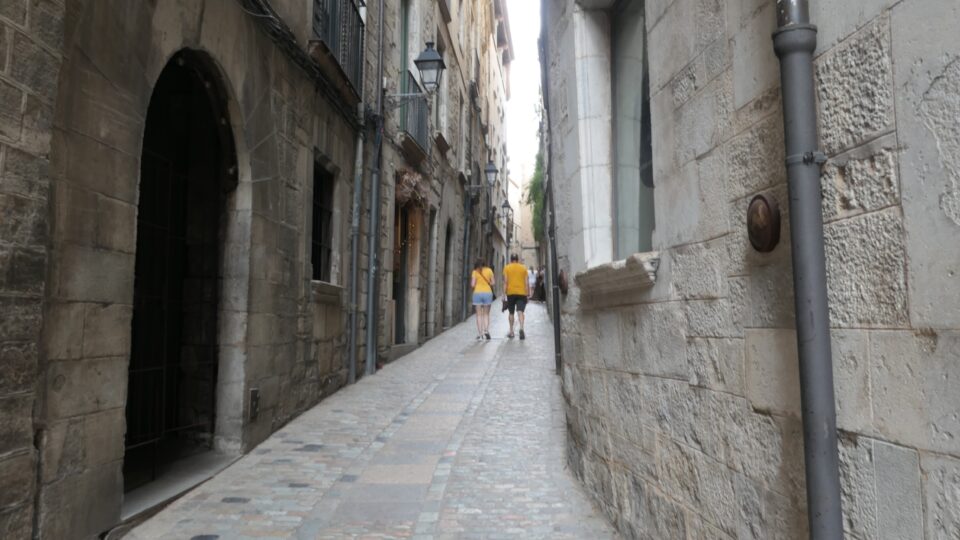
On this street is the entrance to the Museum of Jewish History. This museum aims to preserve the history of the Jewish communities of Catalonia, highlighting Jewish life in Girona specifically. We had visited this museum in 2007, so we gave it low priority this trip and did not go in.
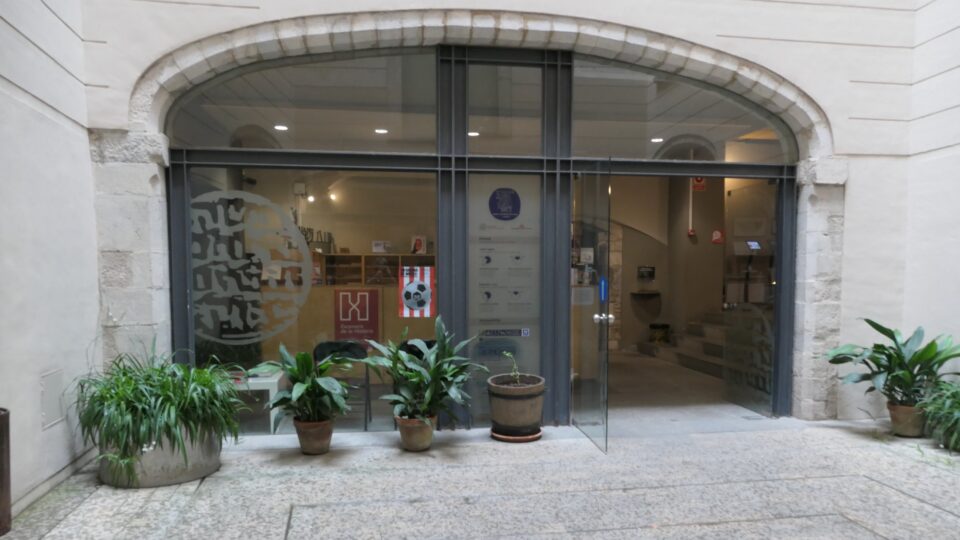
Its exhibits include Medieval Jewish Culture, highlighting the daily life, religious practices, and cultural contributions of Girona’s Jewish community before their expulsion in 1492; Jewish Quarter Artifacts, including religious manuscripts, ancient gravestones, and other artifacts recovered from the Jewish quarter; The Expulsion of Jews in 1492, focusing on the royal edict of expulsion, and detailing how Jewish communities were forced to leave Spain. All this and much much more.
The museum also has an excellent website with detailed explanations about the exhibits, including videos and downloadable PDF brochures. A great resource to learn more, for those interested.
Next door to the museum entrance was a store with a sign “Kosher Food”. The store was mostly a bookstore but also included several Jewish souvenirs (mostly menorahs in all shapes and sizes.) Turned out that this was the museum gift shop. We entered and found that by Kosher Food they meant a small selection of kosher wines and many boxes of matzah. Not exactly what we were looking for. An older man was working in the store and we asked if they had challah for Shabbat. We discovered that he did not speak English, and as we quickly learned, this would be the case in most places we visited in Spain.
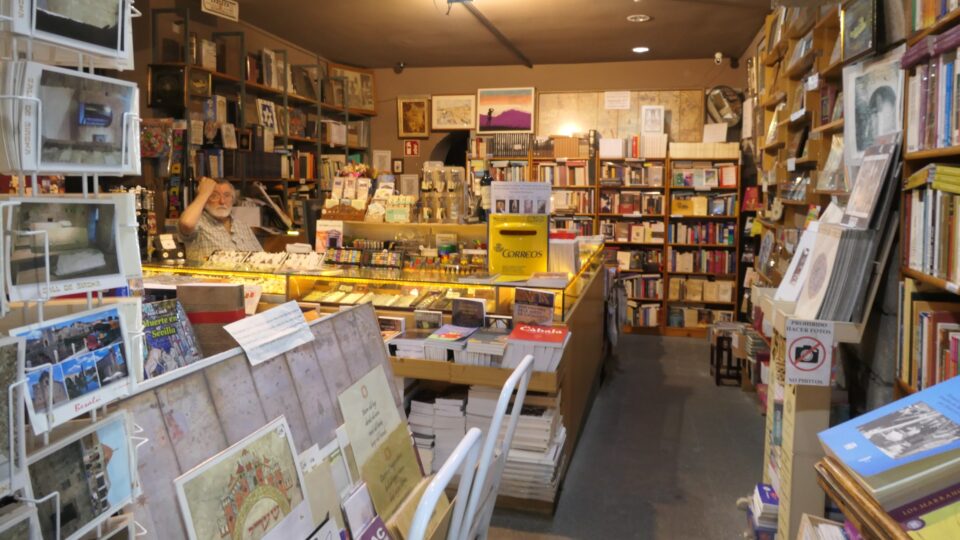
One of the small alleys off Força street is Sant Llorenç street (Carrer de Sant Llorenç.) It is a winding, narrow alley in the center of the Call. It is thought that at 12 Sant Llorenç, there once stood one of the synagogues.
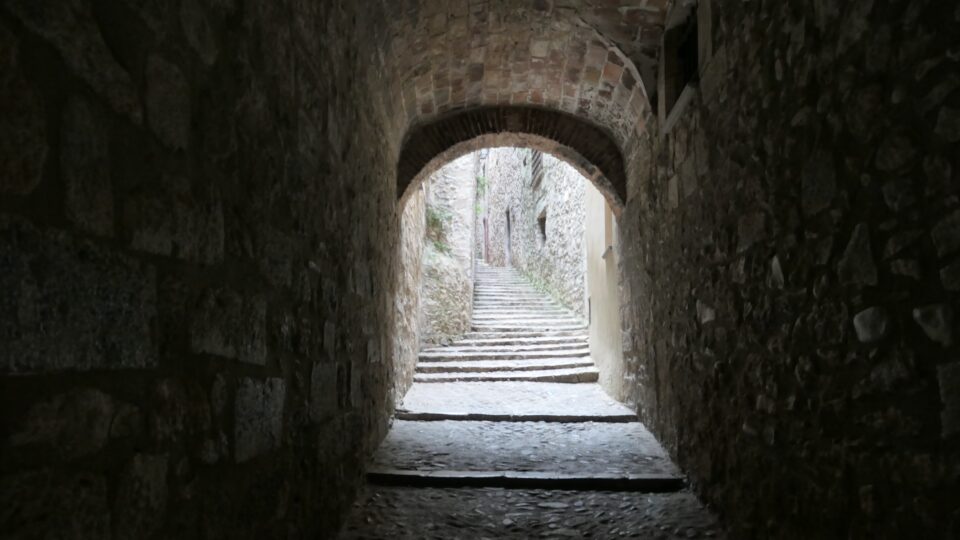
We then went into the History Museum of Girona, also located on Forca street. Internet research showed us that a section of the museum is devoted to the Jewish history of the city. We understood from the clerk at the entrance desk, that this no longer exists, and the objects displayed had been moved to the Jewish History museum.
We continued walking along Força street and arrived at a small courtyard. Here was the entrance to the Municipal Archives, which displays some documents and contracts written in Hebrew and Judaeo-Catalan, a language spoken by the Jews in Northern Catalonia. Old book binding made from Hebrew parchment are also supposed to be on display.
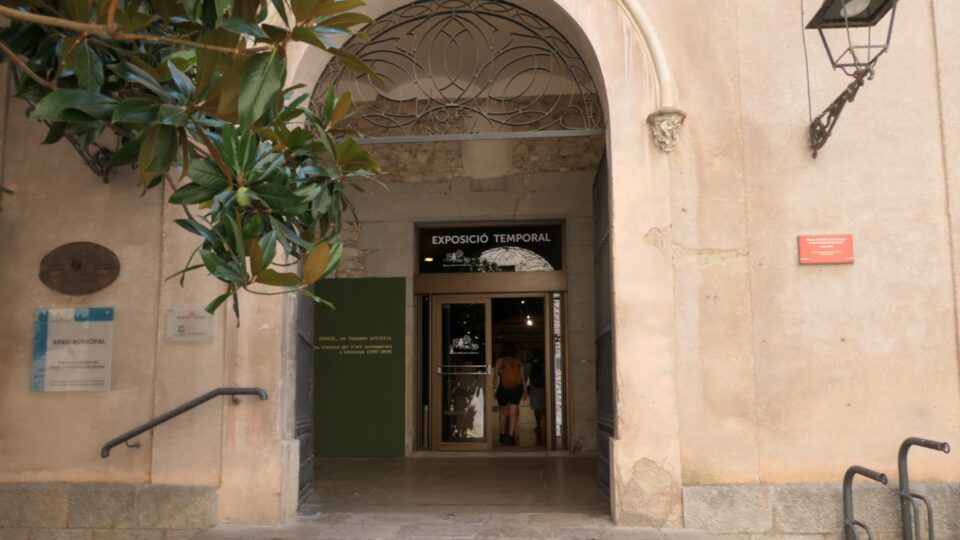
Although the main Archive was open, the items we were looking for are in a side room that was now closed. Unfortunately, we continued onward without confirming that they are really there.
In the same courtyard, is a Chabad building. Chabad moved to a new location in August 2024, a few weeks before our visit and I am not sure if this is their old location or their new one. The Girona Chabad today is the only synagogue active within a medieval Jewish quarter in the entire Iberian Peninsula.
As we left the courtyard, on the wall of one of the buildings was an impressive painting that I clearly remember from our first visit in Girona 17 years ago. It appears as though it is a window looking into a house and showing the interior of a Jewish home. A menorah is clearly visible in the background.
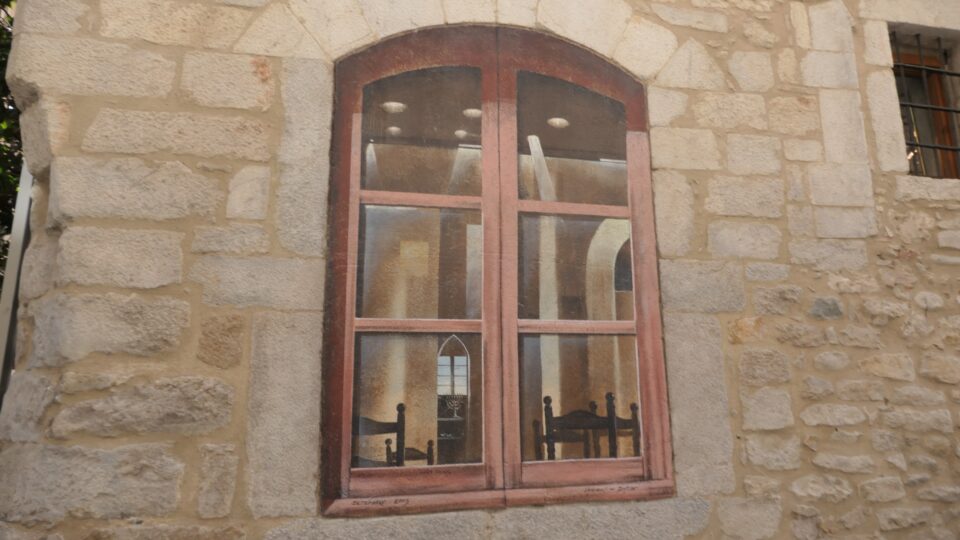
At the northern end of Força street, is the cathedral of Girona, the Cathedral of Saint Mary. Medieval Jewish neighborhoods were often adjacent to the cathedral. You might recognize Girona’s cathedral from the TV series Game of Thrones. The cathedral and its steps were the filming location in two episodes of the sixth season.
We climbed the 90 steps to reach the Cathedral entrance. Inside, adjacent to the main hall of worship, is a museum. Inside the last room of the museum, is the Tapestry of Creation. This is a huge needlework from the 11th century depicting scenes of creation and of the yearly calendar. Its original use is unknown. Although its overall theme is Christian, the creation scenes are familiar from the Old Testament.


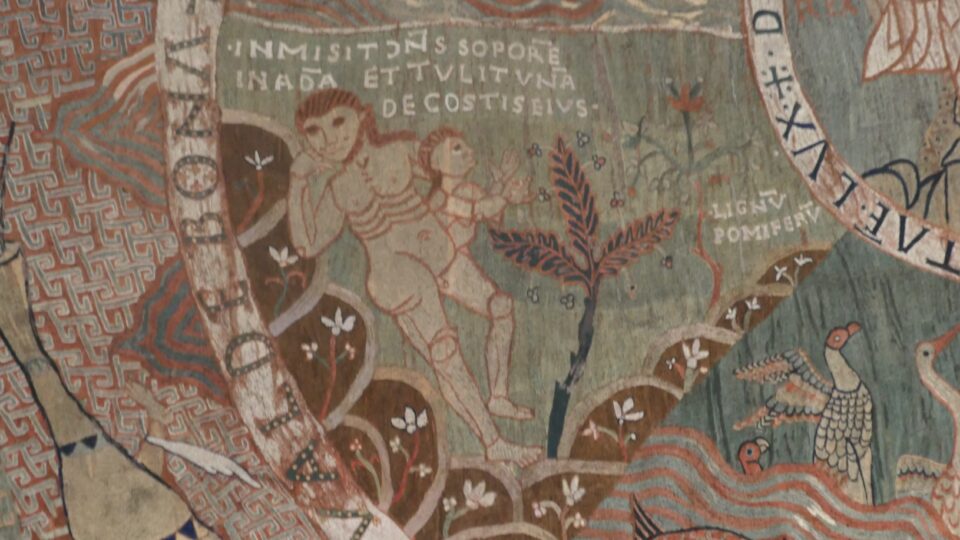
Our next stop was the Arab baths. They are misnamed – they are not Islamic baths, but rather Roman-style baths built in 1192. The baths consist of four rooms where residents would bathe and socialize: the Apodyterium, or changing room, with a central octagonal pool surrounded by columns; the Frigidarium, the cold room; the Tepidarium, the warm room; and the Caldarium, the hot room similar to a sauna. When visiting, besides walking through the rooms, you can also take stairs to the rooftop with views over the city.
In Girona, these public baths were used temporarily as a mikveh by the city’s Jewish community. This is very unusual – Jewish communities usually had their own separate mikveh for ritual use. However, in 1285, the Jewish quarter in Girona was destroyed by the Almogavars (mercenary warriors for the Crown of Aragon). After that, the Jewish community didn’t have a proper and suitable mikveh and while waiting for the reconstruction of a new mikveh, they rented a room in these baths.
The Arab Baths also appear as the Baths of Braavos in the Game of Thrones (Season 6, Episode 8.)
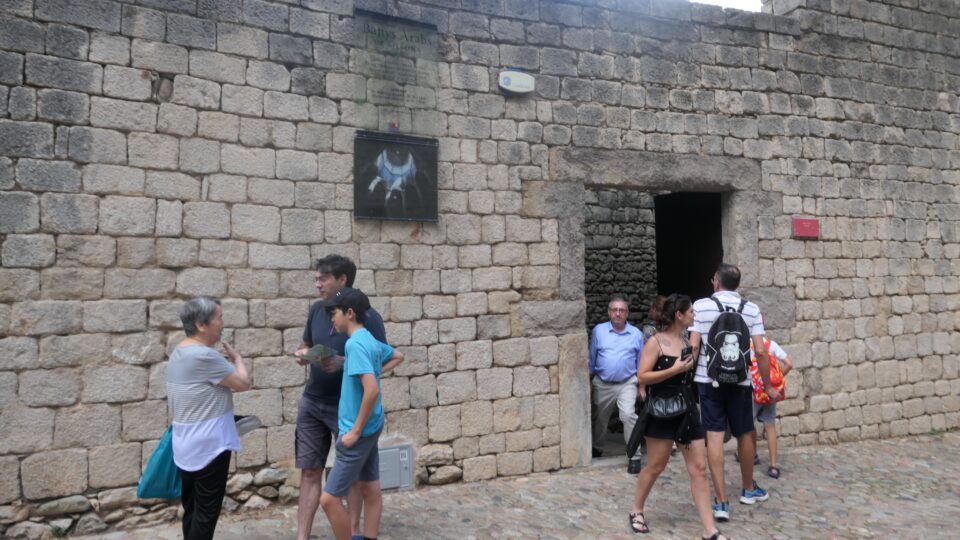
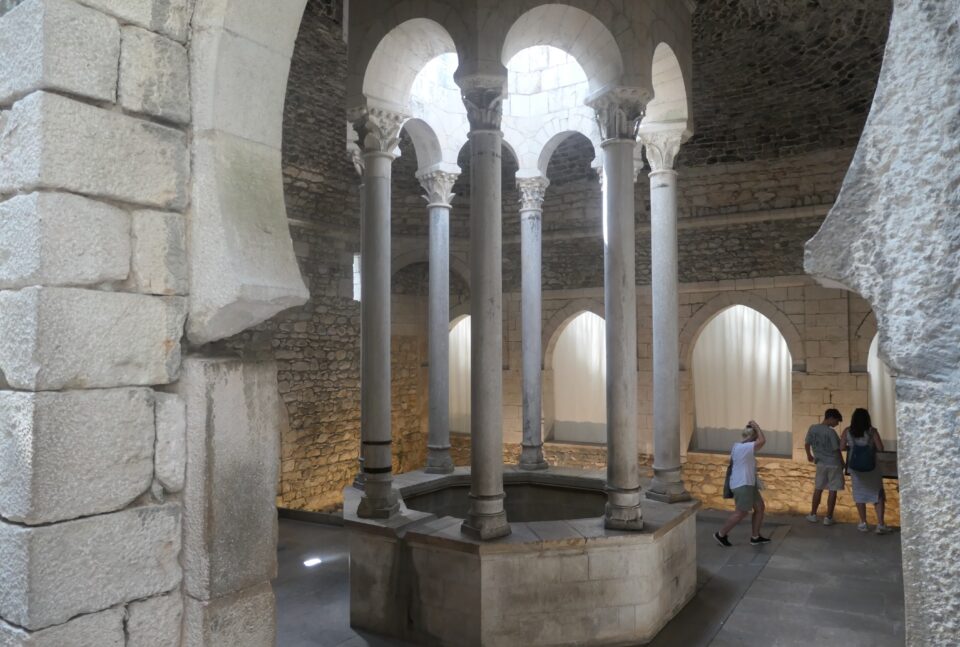
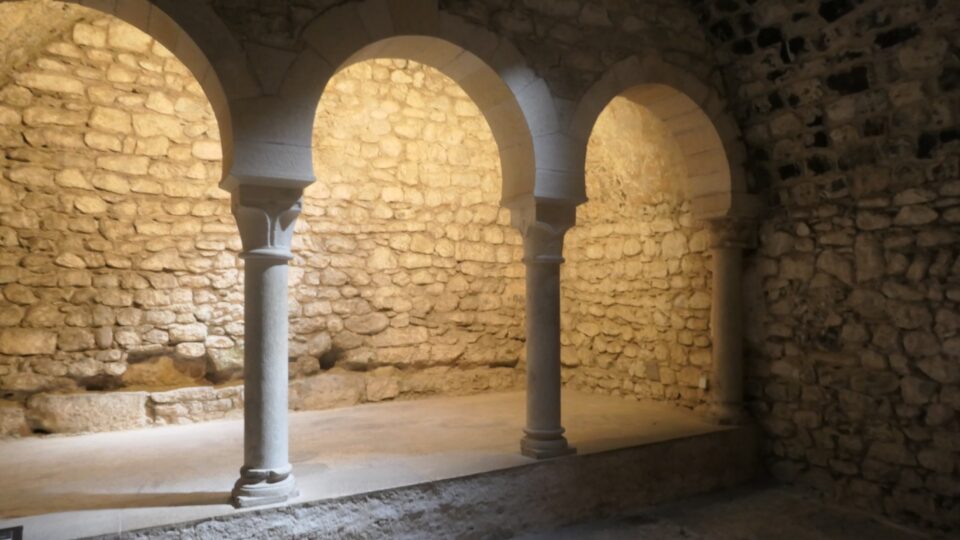
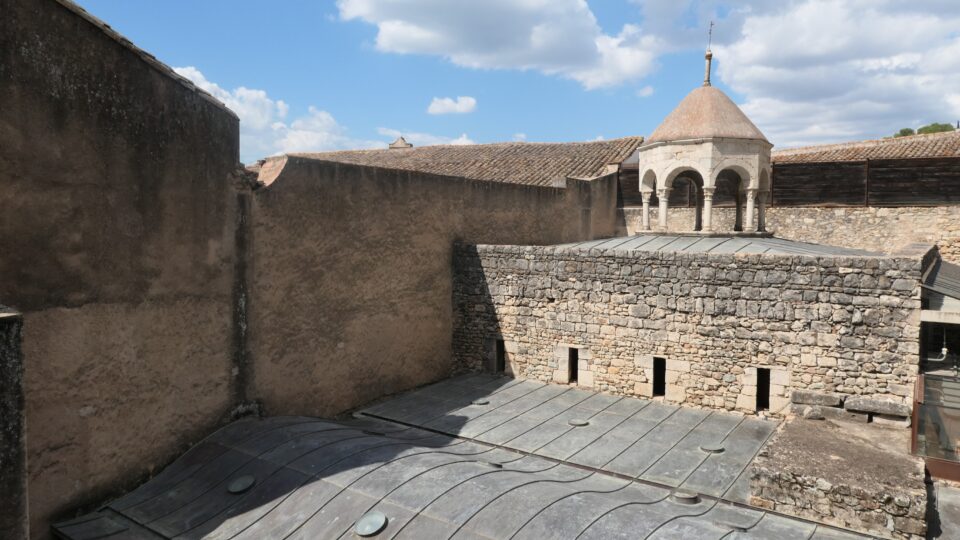
Our last stop was the Museum of Archeology which was supposed to have some Hebrew tombstones on display. All the explanations on the exhibits were only in Catalan and the clerk at the entrance desk did not speak any English. We looked and looked and did not find any Hebrew tombstones. After a while, we finally found someone who spoke English and she told us that the Hebrew tombstones, like the Jewish objects in the History Museum, had all been moved to the Jewish History Museum.
On one hand this makes sense, that all the objects of Jewish history are displayed together. On the other hand, the audience that comes to these museums (The Girona History Museum and the Museum of Archeology) do not necessarily go to the Jewish History Museum. If visitors saw Hebrew tombstones in these more general museums, they might learn that there was once a Jewish community here and the knowledge might reach a wider audience. Not sure which approach, having everything in one place or having it dispersed, is better.
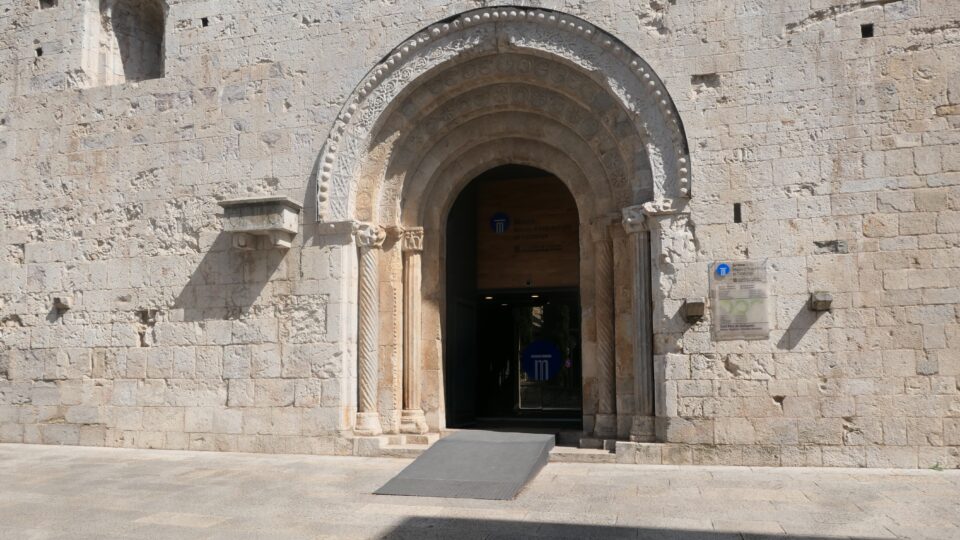
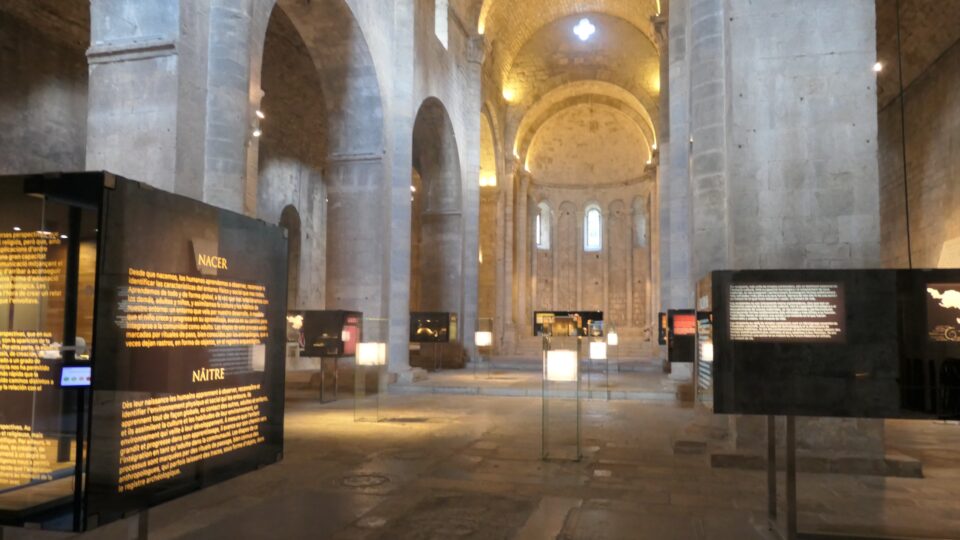
In doing research for this blog, I later discovered that across the street from the Museum of Archeology, is an Anne Frank memorial. It was erected in 1998, on the 50th anniversary of the publication of her diary. It is a monolith with a triangular plan that creates a hidden star of David, only visible from the sky. Plaques in Catalan, Hebrew and Dutch appear on the sides. Sorry to have missed seeing it.
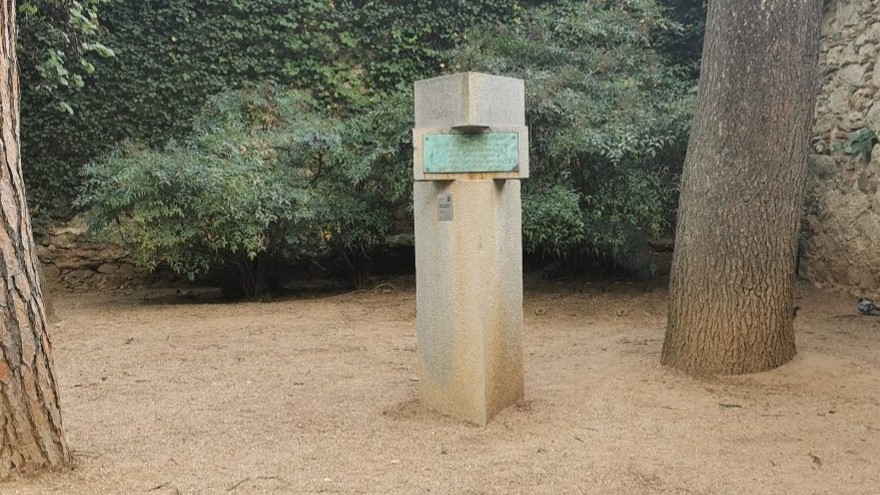
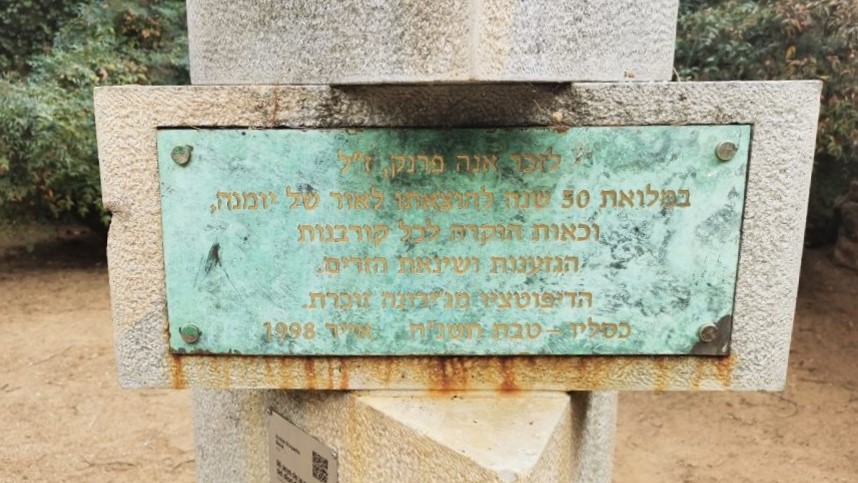
Another place that we did not see is the Girona Jewish Cemetery on Montjuïc, a hill just north of the historic district. The name “Montjuïc” translates from medieval Catalan as “mountain of the Jews”. For much of Girona’s history, Montjuïc was uninhabited, the site of only the medieval Jewish cemetery of the city and the 17th century Montjuïc Castle.
The cemetery was discovered in 1862, when the construction of the railway line from Barcelona to France reached Girona and unearthed 20 tombstones with Hebrew inscriptions. Today, some of these gravestones can be seen in the Jewish History Museum. Between 1967 and 1971, a suburb was built on Montjuïc. Residential buildings now cover the entire mountain. Our understanding is that today there is no indication that a Jewish cemetery once existed at this site.
Today was our first day of doing Wandering Jew in Spain. Since finding Jewish Heritage sites has always interested us, we remembered being at some of the places we saw this afternoon from our trip to Spain in 2007. Here we are, back in Girona, older, wiser and definitely not as energetic.
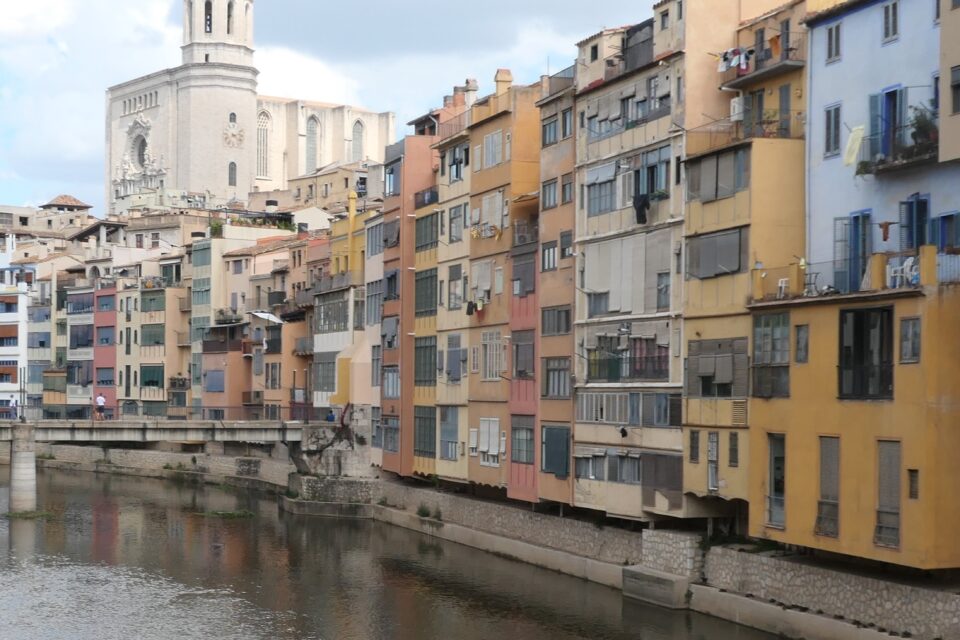
Gives a new meaning to the song 99 bottles of beer